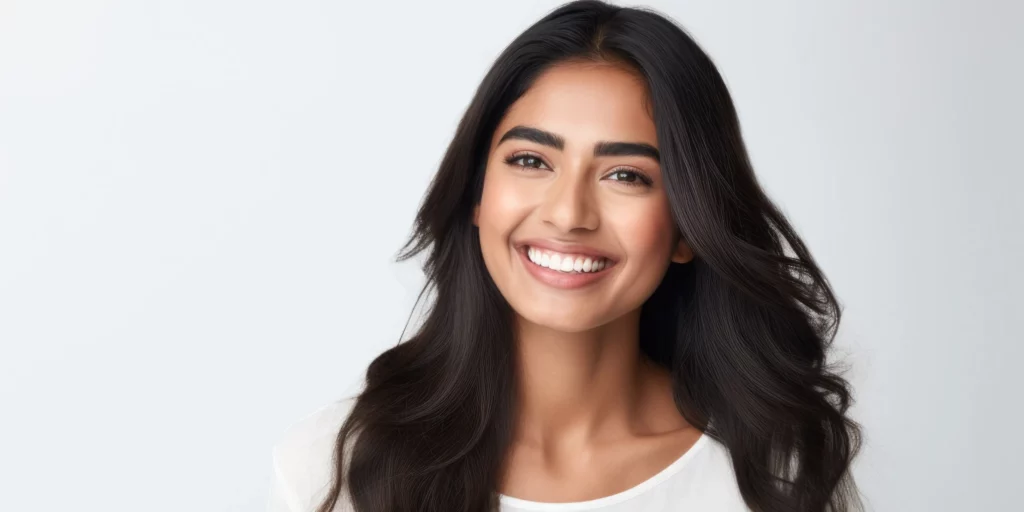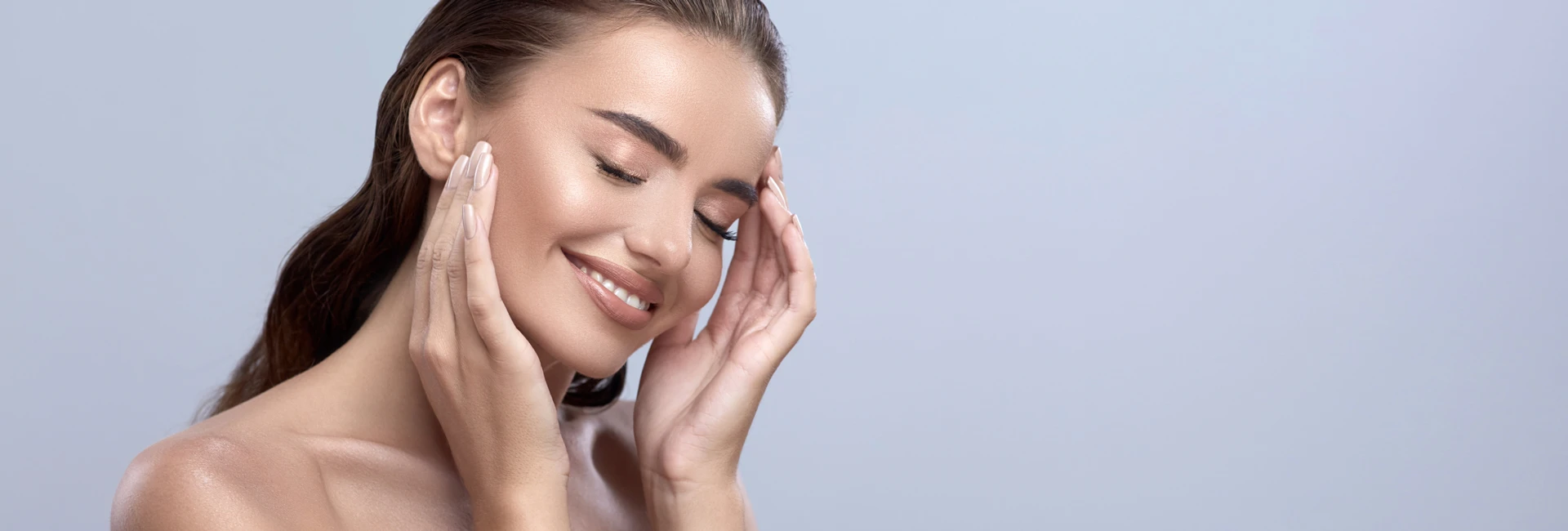Page Updated:
Indian Rhinoplasty
Indian rhinoplasty is a tailored plastic surgery procedure designed to refine and enhance the nasal features of patients of Indian heritage. This nuanced form of ethnic rhinoplasty requires specialized understanding and skill. While some seek subtle alterations to achieve a more Caucasian-looking nose, others aim to embrace and accentuate the beauty inherent in their ethnic background. Precisely tailoring the Indian nose to the cosmetic goals of each patient demands a balance of reshaping and preserving the inherent ethnic characteristics that harmonize with an individual’s unique facial attributes.
Dr. David Cangello is a facial plastic surgeon who possesses unparalleled expertise in Indian rhinoplasty, offering results that harmoniously blend with the patient’s facial features. His aim is to strike a balance between personal aesthetic aspirations and a genuine respect for the rich tapestry of Indian cultural and facial nuances. As New York City’s esteemed rhinoplasty specialist, Dr. Cangello is adept at addressing the unique concerns of patients with Indian roots. As a Board-Certified Plastic Surgeon, he has carved a niche in ethnic rhinoplasty, showcasing unmatched proficiency that is sought by patients beyond Manhattan and its surrounding areas in New York.
What Is Indian Rhinoplasty?
Indian rhinoplasty refers to a specialized form of rhinoplasty that takes into account the unique anatomical and aesthetic characteristics of the Indian nose. The Indian nose has specific traits that can differ from other ethnic groups. In Dr. Cangello’s practice, these often include thicker skin, a dorsal hump, drooping tip, and overprojection of the nasal bridge. When performing Indian rhinoplasty, Dr. Cangello aims to address these distinct features while ensuring the results look natural and harmonious with the rest of the facial features.
A thorough understanding of the diverse nasal shapes and structures within the Indian population is essential, as there can be significant regional variations. Dr. Cangello’s approach to rhinoplasty in an individual of North Indian descent might differ from that of a South Indian patient due to these regional differences.
It’s vital to recognize the unique characteristics of the Indian nose when comparing it to those of Caucasian, Oriental, and African groups. The facial structures of people across India’s regions have noticeable distinctions. As such, Dr. Cangello’s nasal surgeries are tailored to respect these differences, ensuring outcomes that seamlessly integrate with the individual’s facial attributes.

Characteristics of the Indian Nose
While global beauty standards influence aesthetic desires, Dr. Cangello understands that each ethnicity presents unique facial features. His expertise in navigating these differences ensures the application of specialized nose surgery techniques to bring forth results that resonate with the individual’s identity.
Measurements of the nose play a crucial role when designing cosmetic nasal procedures. Indians, hailing from regions including the North, Central, West, South, and the Himalayas, display distinct variations in their nasal structures. In addition to the common characteristics Dr. Cangello sees (outlined in the subsequent section), there are some interesting regional aspects of note. On average, the nasal height and width across all regions were 50.48 mm and 36.59 mm, respectively. Northern Indians typically have the most elongated noses, measuring 52.69 mm in height and 35.01 mm in width, reflecting a slender, Caucasoid-like appearance. In contrast, Southern Indians possess the widest noses with a width of 38.66 mm and often have noses that are notably shorter, broader, and more horizontally aligned. When viewed from below, their noses display an ellipsoid shape, accompanied by a pronounced nasal root, a tip that tilts slightly upward, wide-set alae, and a rounded tip. Those from the Himalayan region have the most compact noses, with a height of 47.2 mm. Generally, the Indian nose can be classified as mesorrhine, setting it apart from the leptorrhine noses of Caucasians and Orientals, and the platyrrhine noses prevalent among Africans.
More common characteristics often include:
Thick Skin Layer: A predominant feature of many Indian noses is their relatively thick skin, however many do not have thick skin. If thicker skin is present, it means that adjustments to the underlying bone and cartilage structures need to be more assertive to ensure the desired outcomes shine through. If changes are too mild, the final shape might not be discernible due to this dense skin layer.
Weaker Lateral Cartilages: Weaker or softer upper and lower lateral cartilages may be a characteristic in some Indian noses. This can influence the overall shape, support, and projection of the nose. In some cases, this can lead to a less-defined nasal tip or a broader nasal base.
Tip Droop: Many Indian noses exhibit a drooping or ptotic nasal tip. From a side profile, this results in the nasal tip pointing downwards. The angle between the base of the nose and the upper lip often measures less than 90 degrees in such cases, making the nose appear elongated or aged.
Dorsal Hump: The Indian nose frequently presents a dorsal hump, a raised bump on the bridge best seen from a side profile. This hump can make the nose appear longer. If combined with a drooping tip, it can amplify the elongated appearance.

Benefits of Indian Rhinoplasty
Dr. Cangello’s primary objective is to enhance the nasal aesthetics for Indian patients, addressing concerns specific to their heritage. Besides cosmetic refinement, the procedure can positively influence respiratory function and overall facial harmony.
Candidates for Indian Rhinoplasty
Indian rhinoplasty offers an opportunity for individuals of Indian descent to refine their nasal contours. Ideal candidates are those who have realistic expectations and are non-smokers or willing to quit smoking for at least three months before the surgery.
Approach to Indian Rhinoplasty
When undertaking rhinoplasty on an Indian nose, Dr. Cangello’s primary objective is to address and correct features that are of concern to the patient, while preserving the unique ethnic nuances. His approach can be open or closed, however he always begins with a closed approach to rhinoplasty for Indian patients, but may determine that open is indicated especially when significant alterations to the nasal tip are necessary. The open approach grants enhanced visibility and precision, especially when using cartilage grafting techniques. If the primary focus is the nasal bridge, and only minor tip adjustments are needed, a closed approach can be adopted.
Indian Rhinoplasty Procedure
Dr. Cangello’s state-of-the-art facility in Manhattan, New York, is where rhinoplasty procedures take place. Under general anesthesia, patients can generally expect to undergo a 3-4 hour procedure, during which Dr. Cangello meticulously reshapes the nose. Post-surgery, patients are provided with dedicated care to ensure a smooth recovery.
Revision Indian Rhinoplasty
In cases where a follow-up procedure is desired or necessary, Dr. Cangello is equipped to correct and enhance previous results. He recommends waiting at least 10-12 months post the initial surgery to consider revisions, allowing for complete healing and a clearer perspective on the results.
Indian Rhinoplasty Recovery & Results
Post-procedure, Dr. Cangello’s team will work to ensure patients recover seamlessly. Once the anesthesia wears off, patients are advised to relax, follow specific aftercare guidelines, and schedule follow-up appointments for optimal healing and result evaluation. With Dr. Cangello’s advanced techniques, most patients experience minimal swelling and discomfort, resuming regular activities within 7-10 days.
For those considering Indian rhinoplasty, it’s crucial to remember that while initial results are visible soon after the procedure, the full effect may take up to a year to materialize, as the nose continues to refine and settle.
Schedule A Consultation For Indian Rhinoplasty
If you’re of Indian descent and contemplating rhinoplasty, please contact us at our New York City office to schedule a personal consultation. With years of experience, Dr. Cangello is committed to delivering stunning, natural-looking results with Indian rhinoplasty. If you’re ready to redefine your nasal aesthetics while cherishing your rich ethnic heritage, schedule a consultation with Dr. Cangello in New York City and embark on a journey to achieve the perfect balance between your aesthetic goals and cultural legacy.
FAQs About Indian Rhinoplasty
Yes, non-surgical rhinoplasty employs dermal fillers to modify the appearance of the nose. However, its potential changes are somewhat limited compared to surgical rhinoplasty. Common uses for non-surgical rhinoplasty among Indian patients include camouflaging minor irregularities or bumps in the nasal bridge. Fillers might also be used to subtly reduce the appearance of a drooping tip to make it less prominent.
Every surgery leaves some scarring, but Dr. Cangello utilizes state-of-the-art techniques and strategic incision placements to ensure minimal visibility. Most incisions in Indian rhinoplasty are made inside the nasal cavity. However, there might be a small incision at the columella’s base, the tissue separating the nostrils. This scar is typically discreet and fades over time. If nostril alterations are necessary, additional scars may be present but are typically concealed. Dr. Cangello will guide you on post-operative care to ensure optimal scar healing.
To ensure minimal scarring and optimal healing, it’s vital to keep the incision sites clean, especially during the initial week post-surgery, to prevent infections. Post the first week, shield the scars from excessive sun exposure, and avoid direct tanning. Regularly applying sunscreen to the scarred area will prevent UV rays from darkening the scars. If you are outdoors for extended periods, consider wearing a wide-brimmed hat to protect the nose. Over time, the scars mature and blend with the surrounding skin. Should there be any residual visibility during the healing process, makeup can be an effective concealer until it fades naturally.
The pricing for Indian rhinoplasty with Dr. Cangello in Manhattan is contingent on various factors, including:
- The depth and intricacy of the surgical adjustments necessary
- The chosen surgical method (be it implant or cartilage augmentation)
- If the procedure is a revision of a prior rhinoplasty
For a detailed quote and breakdown, please schedule a personal consultation with Dr. Cangello. During that time, he will assess your unique nasal anatomy, listen to your concerns and aspirations, and design an optimal treatment plan designed to achieve your cosmetic goals.
Dr. Cangello is a renowned rhinoplasty surgeon who specializes in various ethnic rhinoplasties. In addition to Indian rhinoplasty, he has significant experience in Asian rhinoplasty, African American rhinoplasty, Persian rhinoplasty, and rhinoplasties tailored for Hispanic and Latino patients. Recognizing that every ethnic identity has unique characteristics and needs, Dr. Cangello embraces a personalized approach in facial plastic surgery to maintain and highlight each patient’s distinctive ethnic features.
His expertise spans across various surgical techniques, including open rhinoplasty, closed rhinoplasty, and revision rhinoplasty. Regardless of the surgical procedure chosen, Dr. Cangello’s primary objective remains consistent: to deliver natural-looking results that resonate with the rhinoplasty patient‘s ethnic identity and aesthetic desires.
It’s imperative for anyone seeking an ethnic nose job to find a rhinoplasty surgeon like Dr. Cangello who not only understands the intricacies of each ethnicity but also possesses the requisite surgical techniques to ensure optimal outcomes tailored to each individual’s needs.
